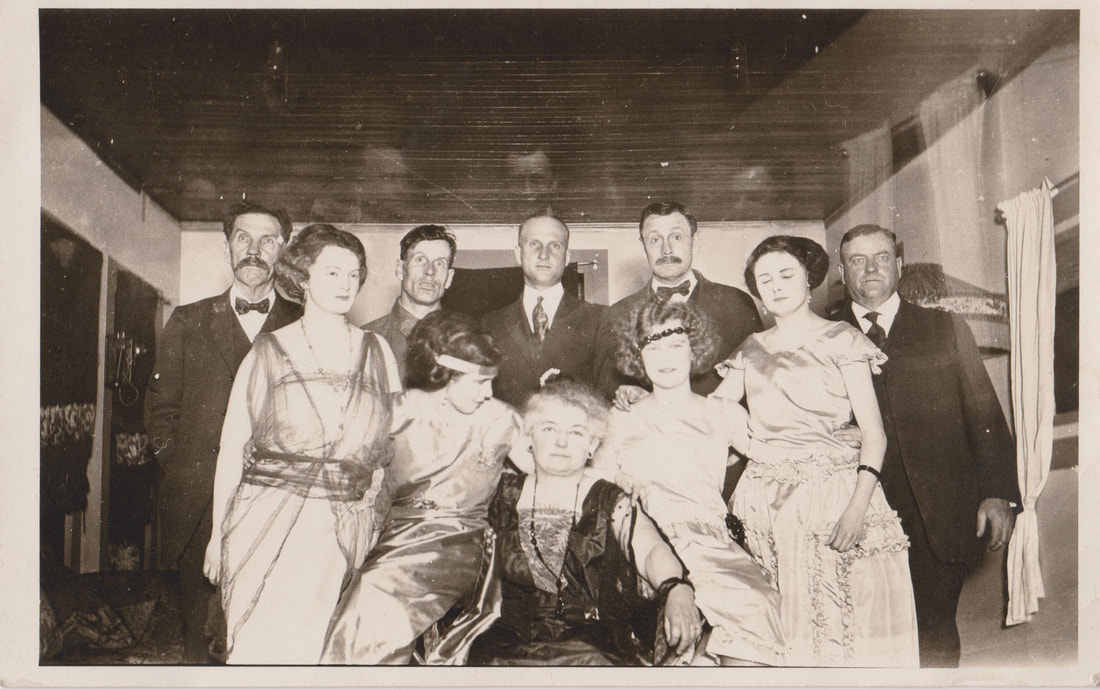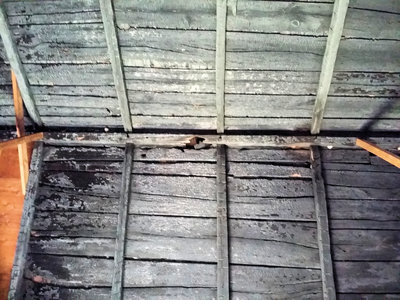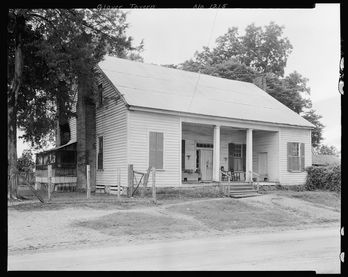The Forsyth will be opening its doors this coming weekend during the Cambria Town Wide Yard Sale. Stop by to see our progress on our historic restoration of the property or to shop in our little antique shop currently set up just in front of our barn. We would love to see all of our neighbors and friends at this once a year town event!
0 Comments
Early Settlement Warrens Corners |
| Intro Beaver Dams Ruin Land Forsyth First Settler Wild Animals In Abundance Tavern Erected in 1806 Indian Invasion Repulsed Brave Women Rewarded Romance Named Hamlet Beach Family Arrives The Steadman’s Settle Haner’s Commodious Loghouse The Carleton Family Col. Sutherland Arrives | The First Sawmill Carlton’s First Cidermill Capen and Sabins Arrive The First Physician Arrives Adam’s Blacksmith Shop Mrs. Taylor’s Sudden Death Talbert Opens Tavern Cleared Parker Farm Freer Antecedents Settle Crocker Homestead Built Fowler Traded Farms Samuel Adams Arrives Freeman Builds Sawmill | Tailor in 1819 Beasts Drive Gunn Away First Negro Arrives Physicians were Numerous Cooley Migrated West First School Opened Methodist Church in 1825 Brick Church Built 1858 Military Activities Early School Life Black Famine in 1816 Stage Coach Days Blacksmith Industry | Threshing Machines Harvesting Implements Plows and Harrows One Horse Wagon Boot and Shoe Industry Post Office Manufacturing Roads Cemeteries |
Part 1.
Warrens Corners had no real natural advantages to make it a place of prominence above the many pleasant hamlets that conduce to make up Niagara County one of the most desirable counties of the state to locate in. It chanced to be located near the hub of the county, after its several towns of which it composed were located. Warren’s Corners comprises a part of the towns of Cambria, Lockport, Newfane and Wilson. In 1821 the proper authorities at Albany appointed three commissioners, Erasmus Root, Isaac Hawley and William Bruce, to locate the county seat. In connection with other localities from Lewiston to Wrights Corners they came to Warren’s Corners, and they were royally wined and toasted by Ezra Warren, then a large property holder and hotel keeper of the corners, and offered a commodious site for the location of the public buildings that would necessarily have to be erected.
The proposition was favorable considered by two of the commissioners, but previous to their final decision, Wm. Brittan died, and the remaining two differed in their opinion as to the location, so it became necessary to appoint another commission, which occurred in 1822. When they were qualified, and ready to act in their official capacity the Erie canal had been surveyed and its location determined upon. Therefore they selected Lockport. The wisdom of their choice has made itself manifest as years continue to multiply.
The proposition was favorable considered by two of the commissioners, but previous to their final decision, Wm. Brittan died, and the remaining two differed in their opinion as to the location, so it became necessary to appoint another commission, which occurred in 1822. When they were qualified, and ready to act in their official capacity the Erie canal had been surveyed and its location determined upon. Therefore they selected Lockport. The wisdom of their choice has made itself manifest as years continue to multiply.
Beaver Dams Ruin Land.
The pioneers had a dense forest to confront them as they located on their several farms. Many years previous the beavers had constructed dams to obstruct the flow of water in its natural course, so that three swamps were within, or contiguous to its borders. The one in the north part called, the big bear swamp, embraced hundreds of acres; one south of the Ridge Road, flooded a large tract of land for the most part of the year, and one on the east, located principally on the Forsyth farm, though not as large, retained the water like the previous ones until the hot days of summer, when the malaria that was generated from them caused fevers and augue that enfeebled every member of the community, so that at times hardly enough well ones were left to care for the sick. In time, those dams were opened by state and private ditches from six to eight feet deep. The swamp land was thus reclaimed, and consequently the health of the people in a great measure assured.
Forsyth First Settler.
The first settler that struck a stake for a permanent residence at Warren’s Corners was John Forsyth. He was a native of the State of New Jersey. In the year 1800 he, accompanied by his brother, William, came to Western New York. His brother settled and became a large property holder in Canada near the Falls. He built a large hotel where the Clifton House now stands, and was its proprietor for many years.
John Forsyth sojourned in Genesee County. N. Y., two years. There he became acquainted with and married Miss Mary Ganson, a young lady connected with a family of prominence in that county, many of whom have since help responsible and honored positions in Western New York.
John Forsyth sojourned in Genesee County. N. Y., two years. There he became acquainted with and married Miss Mary Ganson, a young lady connected with a family of prominence in that county, many of whom have since help responsible and honored positions in Western New York.
Wild Animals In Abundance.
Early in the spring of 1805 he with his family started for the Town of Cambria as it as that time comprised all that section of land between Tonawanda Creek and Lake Ontario. His wife and child rode on horse. The household goods and provisions were loaded on an ox sled. Mr. Forsyth drove his stock, which comprised a small flock of sheep, a cow, and some shoats, in connection with the ox team. Taking what at that times was called the Niagara and Batavia road, or might be more properly expressed as an Indian trail. On their arrival a temporary abode was constructed. In the fall a more commodious log house was erected near the site of the present homestead. At that date their nearest neighbor east was Samuel B. Moorehouse, who kept a tavern at the place now called Hartland Corners. The intermediate space was known for many ears as the eleven mile woods. Five miles west on the South ridge, Joseph Hewett had located, who soon after sold out to William Howell, and he kept a hotel at that place for many years. On the North ridge there were two or three families by the name of Beach. A few other families were sparsely located in what was then called the Town of Cambria. The first summer of Mr. Forsyth’s residence, having occasion to cut swail grass in the marshes south of the ridge, principally on the Southerland and Longmate farms of today, he was obligated to go to Mr. Hewett’s five miles, to borrow a pair of boots to protect himself from the bite of the rattlesnakes that infested the marshy places in the warm days of July and August. The second year of their abode Mrs. Forsyth laid one of her small children on the floor on an improvised bed to take its usual mid-day nap. As she went to look to its welfare what was her surprise and horror to see a large rattlesnake that had unceremoniously crawled in the open doorway and lay snugly coiled up on the quilt near the child. With a rare presence of mind she quietly stepped out, got an axe and returned and with a sure blow severed the head of the reptile from its body, thus saving the life of her child. The small flock of sheep that Mr. Forsyth brought from Genesee County became the prey of the wolves. If enclosed for protection for the night they would pounce upon them in the day time. The cold winter nights were many times made hideous by their terrific howling. Bears were quite numerous and at times quite aggressive, especially when they got on track of a good shoat, or a patch of green corn, when bruin and the coon were hardly satisfied with an equal share, regardless of the wants of the pioneer and his family.
Tavern Erected in 1806.
Owing to the immigrants and land speculators that came to settle and view the country, the stage lines that where established to accommodate the travel and carry the mail from the eastern to the western part of the state and the heavy teaming required to carry goods and produce from one section to another, induced many of the early settlers to commence tavern keeping. John Forsyth erected the first sign post for a hotel at Warren’s Corners in the spring of 1806. He lived to be its proprietor until June 2, 1812. He died of paralysis, aged 31 years; was buried a few rods south and west of his late home, where since that times many of his kindred have found their last resting place.
Indian Invasion Repulsed.
At his death Mrs. Forsyth was left with four small children to care for and carry on the farm and manage the hotel. The responsibility resting upon her at that time can hardly be estimated at this distant date. War with England was declared within a few days, June 19, 1812. Prospect of an invasion of British soldiers and Indian savages made the feeble ad unprotected settlers apprehensive of danger, perhaps death. The invasion as apprehended occurred the 23d and 24th of December, 1813. The invading forces composed mostly of Indians, advanced as far east as the Howell tavern on the South ridge. Massacre and destruction of all kinds of property followed their march from Lewiston. At Howell’s hotel they were met by a company of Tuscarora Indians who held their allegiance to the United States under John Mount Pleasant as their chief and there repulsed them, causing the invaders to return to Lewiston. The few settlers at Warren’s Corners packed up what things they could take upon their ox sleds and horse’s backs and started for their previous homes east, principally in Genesee, Livingston and Ontario counties, where many of them had relatives living to provide for them in their extreme necessity. The old Niagara and Batavia road was the one the most of them took. Sad indeed would be the rehearsal of the incidents connected with that journey in the cold, bleak days of December. It was not a very Merry Christmas to them. Turner in his history of the Holland land purchase, states that “entire neighborhoods were deserted, hundreds of log cabins were desolate and the signs and sounds of life were mostly and deserted cattle and sheep jovng and bleating, famishing for the lack of fodder, there was none left to deal to them.
Brave Women Rewarded.
Mrs. Forsyth sent two of her children, Edmund and Luther in the forlorn procession to spend the winter with her brother John Ganson, near Batavia. With the other two smaller ones she remained, prepared to start at a moment’s warning in case of necessity. The defeat of the invaders at Howell’s removed the necessity and she remained at her home, while many of those who fled did not return to occupy their deserted homes until the close of the war.
Romance Named Hamlet.
Ezra Warren who enlisted in a company of cavalry in the state of Vermont in 1812, was in connection with the company sent to the Niagara frontier. He with two others of the company were detailed to do duty at the Forsyth tavern as messengers or to intercept stragglers or deserters from the main force stationed near the river. Then, becoming acquainted with Mrs. Forsyth an attachment was formed and as soon as the members of the company were honorably discharged he returned from Vermont and married her. The place derived its name from him. He continued the business of hotel keeping until the year 1825. That year he became converted through the preaching of the Rev. John Copeland, a circuit preacher of the Methodist Episcopal Church. A radical change in his way of life was made manifest by the baptism of the Holy Ghost that had cleansed him from the sins of the world. He could never be convinced that any other baptism was necessary so that he never was admitted in full membership with any church, only as probationer. Soon after his conversion he became a local evangelist and held revival meetings in many of the churches and school houses throughout the county. Many of the older people of the county remember the fervent exortations of Father Warren, as he was usually called. He died Nov. 12 1857, in the 90th year of his age. His wife preceded him and died Feb. 23, 1857, in the 75th year of her age. Ending a life that was more intensely connected with its history than any other person that has favored it with life’s presence. She was the mother of 12 children, ten of whom grew up to man and womanhood, three of whom are still living. Her grand son, Chas. F. Warren, who owns and lives on the homestead, has among the papers pertaining to the estate, an article from the Holland Land Company, signed by Joseph Ellicott, agreeing to convey to John Forsyth a certain tract of land dated February 17, 1808.
Some winters just don’t want to go away and 1816 was one of those. The 1815 -1816 winter in the northeastern United States was milder and dryer than usual. As spring approached however, the weather turned colder and frosts were widespread. Farmers anticipating planting crops were frustrated throughout April and May. By the first week of June milder weather had returned and farmers rushed to get their crops sown. The relief was short-lived. On June 6th a storm brought freezing temperatures and snow. Crops planted only a week earlier were lost to frost. A few days later, milder weather returned for the rest of the month. Again crops were planted in the hope that the frosts were over. This was not to be. Cold weather and frost returned again in July. With temperatures in the 40s during the day, people began to worry about famine. Crop losses affected not only humans but livestock as well. Another warm spell in later July allayed fears but by August 6th, another round of winter weather arrived. What vegetation had survived the previous episodes was now destroyed. Once again another warm period followed but it was too little, too late. A killing frost came in late September, two weeks before usual. Then the winter started again.
Repercussions of what people called “eighteen hundred and froze to death” were widespread. The overall harvest was half of what it normally should be and only half was edible, leaving people and livestock only a quarter of the crop yield to consume. Crop prices rose while livestock prices dropped as farmers sold off livestock they could not feed. The prices remained in this pattern throughout 1817 and did not return to normal until after 1820. The opening of short sections of the Erie Canal helped stabilize prices. By the 1820s prosperity had returned to the area.
In 1816 Western New York was still very much a wilderness. Most of the information on that summer comes from accounts in New England newspapers and correspondence. However, in the 1849 “History of the Holland Land Purchase,” Oramus Turner wrote of Western New York, “In 1816 and 1817, the seasons were unpropitious (unfavorable)…after a long period of gloom and depression, struggling against formidable difficulties, the courage of the new settlers was revived.”
What caused the summer of 1816 to be so unusual? At the time there was much speculation about why the skies were wreaking havoc. It was later determined that volcanic eruptions in Indonesia between 1812 and 1815 spewed so much dust into the atmosphere that it affected weather conditions for several years around the world. The eruption of Tambora in 1815 is believed to be the worst ever recorded in human history resulting in that memorable year without a summer.
Douglas Farley, Director
Ann Marie Linnabery
Erie Canal Discover Center
24 Church St.
Lockport NY 14094
716.439.0431
CanalDiscovery@aol.com
www.NiagaraHistory.org
Repercussions of what people called “eighteen hundred and froze to death” were widespread. The overall harvest was half of what it normally should be and only half was edible, leaving people and livestock only a quarter of the crop yield to consume. Crop prices rose while livestock prices dropped as farmers sold off livestock they could not feed. The prices remained in this pattern throughout 1817 and did not return to normal until after 1820. The opening of short sections of the Erie Canal helped stabilize prices. By the 1820s prosperity had returned to the area.
In 1816 Western New York was still very much a wilderness. Most of the information on that summer comes from accounts in New England newspapers and correspondence. However, in the 1849 “History of the Holland Land Purchase,” Oramus Turner wrote of Western New York, “In 1816 and 1817, the seasons were unpropitious (unfavorable)…after a long period of gloom and depression, struggling against formidable difficulties, the courage of the new settlers was revived.”
What caused the summer of 1816 to be so unusual? At the time there was much speculation about why the skies were wreaking havoc. It was later determined that volcanic eruptions in Indonesia between 1812 and 1815 spewed so much dust into the atmosphere that it affected weather conditions for several years around the world. The eruption of Tambora in 1815 is believed to be the worst ever recorded in human history resulting in that memorable year without a summer.
Douglas Farley, Director
Ann Marie Linnabery
Erie Canal Discover Center
24 Church St.
Lockport NY 14094
716.439.0431
CanalDiscovery@aol.com
www.NiagaraHistory.org
April 15th 2018
I have told this story about a year without a Summer probably one hundred times this "Spring" and as I looked outside this morning to see a field of fresh white snow I decided that it was about time to dig through the newspaper scans. This one is curtesy of Ed Warren's collection which he was kind enough to lend to me last year. It just goes to show though that it is very possible for Western New York to hold onto winter all year long. For my sake I hope to never witness a repeat of the Black Famine of 1816 but one hundred and two year later... perhaps we are due for a repeat?
November 18th 1789 - November 12th 1879
Warren's Store and
Grange Hall
March 1923
The Grange Movement began in 1867 by The Patrons of Husbandry which was a more-or-less monopolization on farming put together by local farmers of every community throughout the Unites States. The club met as a gathering of resources to help farmers get an upper hand on everything from state-of-the-art machinery to politics. For Cambria, the seat of Niagara County and a place of very well established farms, this Grange was a true powerhouse. It also seems to have become a posh retreat for its members along the Million Dollar Highway as well in its later years.

The two story portion of the Grange Hall was once the Warren's Corners store. Its build date is unknown at this time but its placement right in the center of Warren's Corners would have made it a fine Grocery in its day.
A cargo of ferocious animals will pass the great rapids and the falls of NIAGARA 8th September, 1827, at 3 o’clock
The first passage of a vessel of the largest class which sails on Erie and the Upper Lakes, through the Great Rapids, and over the stupendous precipice at Niagara Falls, it is proposed to effect, on the 8th of September next.
The Michigan has long braved the billows of Erie with success, as a merchant vessel; but having been condemned by her owners as unfit to sail longer proudly “above” her present proprietors, together with several publick spirited friends, have have appointed her to convey a cargo of Living Animals of the Forests, which surround the Upper Lakes, through the white tossing, and the deep rolling rapids of the Niagara, and down its grand precipice, into the basin “below”.
The greatest exertions are making to procure Animals of the most ferocious kind, such as Panthers, Wild Cats, Bears, and Wolves; but in lieu of some of these, which it may be impossible to obtain, a few vicious of worthless Dogs, such as may process considerable strength and activity, and perhaps a few of the toughest of the Lesser Animals, will be added to, and compose, the cargo.
Capt. James Rough, of Black Rock, the oldest navigator of the Upper Lakes, has generously volunteered his services to manage the enterprise, in which he will be seconded by Mr. Leri Allen, male of the Steamboat Niagara—the publick may rest assured that they will select none but capable assistants. The manager will proceed seasonably with experiments, to ascertain the most practicable and eligible point, from which to detach the Michigan for the Rapids.
It is intended to have the Michigan fitted up in the style in which she is to make splendid but perilous descent, at Black Rock, where she now lies. She will be dressed as a Pirate; besides her Menagerie of Wild Animals, and probably some tame ones, it is proposed to place a Crew (in effigy) at proper stations on board. The Animals will be caged or otherwise secured and placed on board the “Condemned Vessel”, on the morning of the 7th, at the Ferry, where the curious can examine her with her ‘cargo’ during the day, at a trifling expense. On the morning of the 8th, the Michigan will be towed from her position at Black Rock, to the foot of Navy Island, by the Steamboat Chippewa, from whence she will be conducted by the Manager to her last moorings. Passage can be obtained in the Michigan from Black Rock to Navy Island, at half a Dollar each.
Should the Vessel take her course through the deepest of the Rapids, it is confidently beliebed that she will reach the Horse Shoe, unbroken: if so, she will perform her voyage, to the water in the Gulf beneath, which is of great depth and buoyancy, entire; but what her fate may be, the trial will decide. Should the Animals be young and hardy, and possessed of great muscular powers, and joining their fate with that of the Vessel, remain on board until she reaches the waters below, there is great probability that many of them, will have performed the terrible jaunt unhurt!
Such as may survive, and be retaken, will be sent to the Museums at New York and Montreal, and some perhaps to London.
It may be proper to observe, that several Steamboats are expected to be in readiness at Buffalo, together with numerous Coachers, for the conveyance of Passengers down, on the morning of the 8th. Coaches will leave Buffalo, at 2 o’clock on the afternoon of the 7th, for the Falls on both sides of the River, for the convenience of those who may be desirous of securing accommodations at the Falls on the 8th. Ample means for the conveyance of Visitors will be provided at Tonawanda, at Lockport, at Lewiston, at Queenston, and at Fort George, to either side.
The Michigan has long braved the billows of Erie with success, as a merchant vessel; but having been condemned by her owners as unfit to sail longer proudly “above” her present proprietors, together with several publick spirited friends, have have appointed her to convey a cargo of Living Animals of the Forests, which surround the Upper Lakes, through the white tossing, and the deep rolling rapids of the Niagara, and down its grand precipice, into the basin “below”.
The greatest exertions are making to procure Animals of the most ferocious kind, such as Panthers, Wild Cats, Bears, and Wolves; but in lieu of some of these, which it may be impossible to obtain, a few vicious of worthless Dogs, such as may process considerable strength and activity, and perhaps a few of the toughest of the Lesser Animals, will be added to, and compose, the cargo.
Capt. James Rough, of Black Rock, the oldest navigator of the Upper Lakes, has generously volunteered his services to manage the enterprise, in which he will be seconded by Mr. Leri Allen, male of the Steamboat Niagara—the publick may rest assured that they will select none but capable assistants. The manager will proceed seasonably with experiments, to ascertain the most practicable and eligible point, from which to detach the Michigan for the Rapids.
It is intended to have the Michigan fitted up in the style in which she is to make splendid but perilous descent, at Black Rock, where she now lies. She will be dressed as a Pirate; besides her Menagerie of Wild Animals, and probably some tame ones, it is proposed to place a Crew (in effigy) at proper stations on board. The Animals will be caged or otherwise secured and placed on board the “Condemned Vessel”, on the morning of the 7th, at the Ferry, where the curious can examine her with her ‘cargo’ during the day, at a trifling expense. On the morning of the 8th, the Michigan will be towed from her position at Black Rock, to the foot of Navy Island, by the Steamboat Chippewa, from whence she will be conducted by the Manager to her last moorings. Passage can be obtained in the Michigan from Black Rock to Navy Island, at half a Dollar each.
Should the Vessel take her course through the deepest of the Rapids, it is confidently beliebed that she will reach the Horse Shoe, unbroken: if so, she will perform her voyage, to the water in the Gulf beneath, which is of great depth and buoyancy, entire; but what her fate may be, the trial will decide. Should the Animals be young and hardy, and possessed of great muscular powers, and joining their fate with that of the Vessel, remain on board until she reaches the waters below, there is great probability that many of them, will have performed the terrible jaunt unhurt!
Such as may survive, and be retaken, will be sent to the Museums at New York and Montreal, and some perhaps to London.
It may be proper to observe, that several Steamboats are expected to be in readiness at Buffalo, together with numerous Coachers, for the conveyance of Passengers down, on the morning of the 8th. Coaches will leave Buffalo, at 2 o’clock on the afternoon of the 7th, for the Falls on both sides of the River, for the convenience of those who may be desirous of securing accommodations at the Falls on the 8th. Ample means for the conveyance of Visitors will be provided at Tonawanda, at Lockport, at Lewiston, at Queenston, and at Fort George, to either side.
Click on the Map above to tour our Niagara County War of 1812 historical sites!
October 13, 1812, an invasion into Canada was launched from Lewiston, setting the tone for the brutal war of 1812.
December, 1812, the British and their allies invade Lewiston. The dead were thrown into houses and the village was burned. Those who were able to flee ran from a legion of raiders and would be dead had the Tuscarora Nation not stalled the invaders in their pursuit.
They halted their escape just long enough to warn the Widow Forsyth and beg her to follow them to the depot in Orleans... but she chose to stay.
As the ruins of Lewiston were covered in snow and the livestock of her neighbors starved in the cold winter's nights, the Widow Forsyth and her two children remained.
Her Tavern became an outpost where she took on the company of Sargent Ezra Warren and from there her kitchen supplied the garrison at Hardscrabble.
Her town and her county were nothing more than ghost towns for two years and she and her children lived and farmed until reinforcements would be sent to retake Lewiston. Youngstown would not be reclaimed until the war had ended and it would take years more to rebuild the desolated villages of Niagara.
Mary and her family remained in the tavern and steadfast as she was, she is buried there as well.
This is our War of 1812 story.
If we caught your interest, come visit us and we will tell you more.
This was the news story that many people probably remember and which the Yousey family must know better than any. To some the barn complex truly was lost that day. As we strive to save it even today we still hear people say that it is a lost cause but not everything is so easily lost in fire. For those who have not seen what that fire did to our barns, here is your sneak peak at the inside.
We are making every effort to ensure that this complex of barns dating back to 1808 are safe and standing for many years to come and hope that these burned portions allow them to remain even longer still. In Japanese burning wood as a stylized preservation technique is known as shou-sugi-ban and the idea is that not only is harder to burn again but it also keeps the rot and pests away.
It also has a sort of beauty when you stand inside the middle of the high vaulted 1898 barn and are surrounded by this immense structure that has survived so much and for so long. We hope that we can share it with you all one day soon but before then we have much fundraising and engineering to do to insure that when the Forsyth Tavern reopens it doors, it and everyone that visits it are safe.
It also has a sort of beauty when you stand inside the middle of the high vaulted 1898 barn and are surrounded by this immense structure that has survived so much and for so long. We hope that we can share it with you all one day soon but before then we have much fundraising and engineering to do to insure that when the Forsyth Tavern reopens it doors, it and everyone that visits it are safe.
A Repairer of Ruin
*Motto of the Clan Forsyth*
We know that Fred M Ackerson was the District Attorney for Niagara Niagara County from 1908 - 1917 and was also a Scottish Mason. What we don't know is who glued his advertisements on the barn wall and why.
Another thing that we know is that both Chas. F. and E. E. Warren used the same barn for their businesses and proudly tested their ink stamps on the same wall and luckily those have endured the years better than their choices in art and advertisement.
Another thing that we know is that both Chas. F. and E. E. Warren used the same barn for their businesses and proudly tested their ink stamps on the same wall and luckily those have endured the years better than their choices in art and advertisement.
Chas is presumably Charles F. Warren who lived from 1856 - 1930 and E. is probably Elmer Warren 1881 - 1947.
If anyone has any information and can shed some on this little mystery we would love to hear what you have found.
| I came across this sad little before and after of the 1830 Glover House and Tavern while looking for taverns similar to Forsyth Tavern. I was stricken by the outward appearance and started to dig further in hopes of finding out what it looked like today. Sadly though, what it looks like today is the tangled mess of nature that you see there below it. That's when the realization set in just how close Forsyth Tavern was to being another Glover Tavern. Perhaps its not as far gone at it seems. Alabama can be a forgiving place to old houses much more so than the cold shoulder of Western New York. Still though, we can't rebuild the past. Once that history is lost, it is lost forever. 1830 saw the first U.S. railroad station and the burning of New Orleans. Buildings were still built by hand and from the land that they stood on. One hundred and eighty-seven years of existence. Forsyth has seen another twenty-two. That is a lot of life and a lot of energy for a house forgotten. I'd call that a building that is singing to the birds, for only the birds are singing back. You can learn a lot from buildings like these and some might say that you can feed off of all of the joyous energy that has been spent there. That I will let you experience for yourself in the Forsyth, but hopefully someone finds it in the Glover as well. Seems such a sad waste of so many precious things. |
Source:
Historic Highway Guides
Exploring America's History on U.S. Highways
This is a repair that would frighten away the vast majority of potential buyers of this historic home. It is the result of the house's roof collapsing during one of the SEVEN years that the house was left abandoned! However, it IS repairable and what the average onlooker would not know is that the rotten section is the NEWEST part of the house! In fact, the remainder of the house is built of brick, vertically sided in wide plank pine and horizontally clapboarded over that. That has allowed this house to survive 209 years so far and I hope many more to come! With no buyer willing to look past this quite ugly and horrible decay, this historic gem could have joined rank as one of the millions of hearty and historic homes that have bulldozed across our state.
Details
FORSYTH-Warren Tavern Museum
Rent the Tavern
Categories
All
1800 And Froze To Death
1852 Map
1860 Map
Animals Over The Falls
Behind The Walls
Captian John Ganson
Come And Get Your Drunken Pigs
DeWitt Clinton Visits Tavern
Early Settlement Of Warren's Corners
Eli Bruce
Ezra Warren Becomes A Temperance Leader
Ezra Warren's Obituary And Life
Fire At The Forsyth
Former Tavern Keeper Gave Name To Warrens Corners
History
Landmark Preservation Needed
Mary And The Invasion Of Lewiston
Mary Forsyth-Warren
Photos
Small Town News
Tavern As County Seat
Tavern Facts
The Underground Railroad
War Of 1812
Warren's Corners 1938-2017
Warren's Store And Grange Hall














































 RSS Feed
RSS Feed






